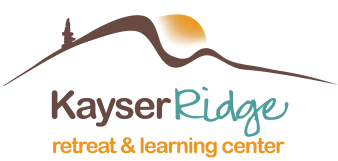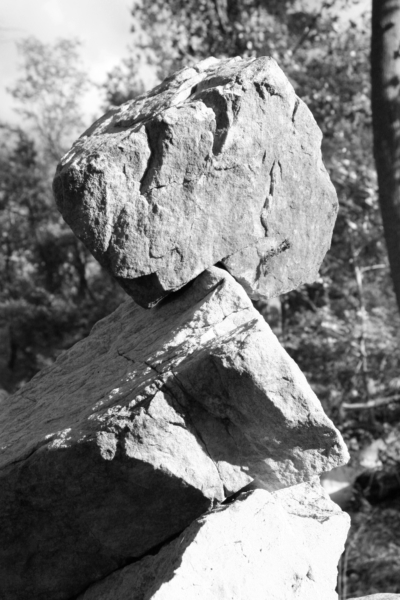 Kayser Ridge FAQs and FYIs
Kayser Ridge FAQs and FYIs
Kayser Ridge Information & Directions
Your Safety Is Our First Concern
The first aid kit is located in the cabinet over the refrigerator.
The “Big Ticket” Safety Items are:
-
- The Road/Transportation
- The Potential for Fire
- Critters/Bugs
- Watching Your Step and Falling Cairns (they are free standing, can fall, and can also damage toes!)
The Road
We gravel and grade the road several times per year, but it only takes one good rain to wash it out…So, there are two recommendations concerning the road leading to Kayser Ridge. First, if you are uncomfortable with short (1/4 mile) mountain roads and/or don’t have a four-wheel or all-wheel drive vehicle, then you should park at the parking area at the base of the property and hike up. NOTE: In particular, front-wheel drive vehicles and hybrids DO NOT do well on the road and I don’t recommend even attempting it. If Dawn or I are on site, we can assist with shuttling. However, anyone renting Kayser Ridge without services (i.e., on-site assistance) needs to be aware that a ¼ mile hike up the hill to the destination point is always a possibility.
A Transportation Option To Consider
Kayser Ridge has negotiated special rates with Reston Limosine for groups of 5 or more. Please contact them directly to help make your experience easier, friendlier for the environment, more fun, and potentially cheaper!
Potential for Fire
NOTE: What I am about to share may sound scary, but it is also the case for many, if not most log cabins, lodges, and mountain retreats in remote locations – not just Kayser Ridge…
Fact: 3,000 square feet of WOOD LOGS, WOOD floors, WOOD framed walls, WOOD ceilings, attached to 3,000 square feet of oil based stain on a WOOD deck — WOULD burn very efficiently if it were to catch fire. Add to that the local fire department is a fair distance away and in rural mountain areas. you never know what challenges they could encounter getting to the house timely.
Fact: Candles are a top cause of fires in homes. Logically, it would make sense to make a “no candle” rule, but they add so much to the ambiance…If you light candles, please use them carefully and safely. God forbid in the case of fire — use the hose on the back patio, which is long enough to go anywhere in the house, or any one of a number of fire extinguishers (which are always best for a grease fire.)
Gas fireplaces were chosen over the desired preference for a natural fireplace to reduce the chance of fire, which is 92% higher with open wood fireplaces — a sacrifice for safety…
Critters and Bugs
Critters (description: bigger than bugs)
The house is in the wilderness and so there is a lot of wildlife. Please keep all garbage in the container in the basement – not on patios. This helps reduce the incidents of bears. A bear has ventured onto the deck when trash was set out back… When I’ve seen the bear, he or she runs away. I don’t believe Kayser Ridge guests are on his or her menu, but let’s make sure there are not any close encounters of any bear kind. I do my best to keep these critters at bay but in the winter it is virtually impossible. If you leave food out at night, count on a visit or two. I’ve seen snakes in and among rocks, and timber rattlesnakes are poisonous, so do be careful. There are lots of blacksnakes, which are harmless.
Bugs (description: smaller than critters)
Bugs collect on the screens and like to follow you in, so it helps to move quickly in and out of the house, especially at night when the lights from the house attract bugs. It’s not fun waking up and realizing some of them feasted on you while you were asleep. Bug spray can make your experience of the decks more enjoyable. It is virtually impossible in to keep flies, wasps and other insects from entering the house. Wasps occasionally sneak in behind people when doors are open or find openings in the logs, enter, and then can’t find a way to exit. They generally hover around the skylights until they become so weak and disoriented that they fly at human level. In two years of operation as a retreat center, two people have been stung. The first-aid kit has sting relief ointment, FYI.
Watch Your Step!
Bring flashlights and use them when walking around at night, especially on the path leading to the upper deck. I’ve twisted an ankle or two on that path – being especially careful will help ensure your getaway to Kayser Ridge doesn’t become a pain-filled one. Speaking of
steps, you can help protect floors from the orange West Virginia clay/mud by taking your shoes off and leaving them by the door.
Beyond Safety: Tips for Convenience and Enjoyment
IMPORTANT – Well Water and Taking Showers
The well provides 3 gallons per minute (and has significant reserve) of some of the freshest, cleanest, and healthiest water on the planet. That water also passes through a high-grade filtration system when it arrives in the house and before it enters the holding tank. However, when 4 showers run at 1.5 gallons per minute for long periods – do the math…We discovered the hard way what happens when the water volume is exceeded – the water becomes murky/rusty looking (the clay is so fine that that the water filter can’t pick it up!).
While it’s not harmful to drink or shower in this water, it’s not especially desirable. Therefore, it is strongly suggested that groups establish a shower rotation where roommates split their showers between morning and evening and try to limit them to a couple of minutes. If it’s possible to not have it as hot as usual, that helps ensure others will have a hot shower, too. This practice has succeeded in groups as large as 14 for several days. When the water does turn rusty in color, it takes several hours to clear until the lines containing the rusty water are clear.
Doors
Doors can occasionally be tricky to close and lock. Not only do you have to shut the door securely, you also must pull the handle upwards until you hear inside latches engage with a “click.” Sometimes this requires jiggling or lifting the door slightly as you close it, due to house expansion and contraction. Once the door handle is raised the door can be locked by using the toggle lever below the handle. Please lock the doors if leaving for an extended period of time. The weather changes frequently – rain coming in through windows can cause water damage.
Put props (weights) of some kind against all doors that you open!
The good news is that there are wonderful mountain breezes that blow through the cabin. The bad news is that the breeze can also cause the doors to slam shut and can break the glass. This potential problem can be eliminated by propping a chair or weight for any door that is open, including the interior French doors.
Windows
If you open them, please remember to shut and lock them. The weather changes frequently – rain coming in through windows can cause water damage.
Creak, Creak, Crack, Crack
Every time you hear a creak and crack in the ceiling it may sound like someone is walking around upstairs or on the roof. Some retreat centers think its fun to create ghost stories around this natural phenomenon, when in truth it’s simply the house telling you “Please continue to relax and enjoy yourself while I switch positions and get more comfortable myself.” (Maybe you already know this, but cracks and creaks can be quite loud and make people wonder if it was a person or animal. I’ve frequently had the report “It was something too loud to be a creak or crack…” It’s not too loud to be one, trust me, I know. I heard one loud enough to be a sledgehammer one day and climbed the roof to check it out. It was a crack/creak…)
Toilets
Kayser Ridge has a septic system and septic systems are very sensitive. Please, please, please, do not flush anything down the toilet except what is from humans that is supposed to go down toilets and toilet paper. Tissue paper, paper towels and other items go in the trash.
Bed Sheets, etc.
Bed sheets, pillows, blankets, and bedspreads for pull-out beds are stored in the ottomans.
Gas Fireplace
There are remote control devices for both fireplaces. It is suggested that you turn off the living room fireplace approximately 60-90 minutes before you decide to turn in for the night. A fan runs until the fireplace cools, which some guests find disturbing. Plus, it just gets too hot especially for those in the lofts). If the batteries run down, a device inside the lower door (living room) or rear (lower level) rear emits an irritating beeping. If this happens, use the manual switch to bypass the remote devices and/or replace the batteries (spares are in the cabinet next to the upstairs fridge).
Other Amenities
Washer and Dryer – located in the basement back room.
AC — We seldom turn the air conditioning on because of the beautiful breeze that blows through the house. If you want to use the air, the controls for that are in the kitchen on the wall. Simply move the switch to “Cool” and use the arrows to set your desired temp. When that temp is reached, the HVAC automatically turns off.
Dishwasher — Detergent is located is under the sink.
Towels — Spare bathroom towels are in the master bathroom closet.
State Parks — There are beautiful spas in town and you have Cacapon State park 2 miles away with a full beach, tennis courts, golf course, etc. Enjoy!
WiFi – Yes, we have high speed wireless! Occasionally, the router needs to be unplugged and plugged in again to reset the wireless connection. The router is in the office in the master bedroom on the messy desk which I keep meaning to clean up…Unplug the electric connection and plug it back in—that does the trick 99% of the time.
Telephone Service — You should not have too much trouble getting cell phone reception if you have AT&T or Verizon.
If you need any other assistance please let me know. The number to call is 202/494-2849.
Outdoors
The property is situated on 40-acres with plenty of options for walking, hiking, and taking-in the views from 3,000 square feet of deck space surrounding the cabin. A separate deck on the ridge behind the house is an ideal place for bonfires in the firepit, cooking s’mores, and having a glass or two of wine under the stars.
OMG! Cairns and more CAIRNS! — A bit about “Cairns of Kayser Ridge”

Kayser Ridge Retreat & Learning Center has an occupying force of “cairns,” which for some visitors creates a spiritual presence. Other visitors describe them as “interesting” and some say they’re just flat-out “ridiculous.” Apart from being guideposts for inter-terrestrial visitors to a landing site I recently constructed on Kayser Ridge (yes, I’m kidding) — I enjoy working with and photographing cairns as a means of creative expression. I also find this activity metaphorical to the work I do in organization consulting and executive leadership coaching. Each stone is both unique and perfect in its own way – partly an inherited form and partly formed by the forces and circumstances of its experience. Each stone is also like every other in certain ways, and possesses a center from which it can be supported and also support other stones. Each stone has innate potential to be part of a something bigger than itself.
Sometimes working with a cairn seems almost too easy — bing, bang, boom —it’s up, it’s balanced, and it’s just plain amazing! Then from time to time a cairn seems impossible and frustrating to work with and after awhile, hardly makes sense to continue the effort. However, even those experiences contribute in some way to my growth and learning. So, if I can learn something from stacking rocks on top of rocks I can learn from anything and any experience! Agreed? Cairns do posses a strange power for me, and it helps that Kayser Ridge has no shortage of rocks. While I’d like to take credit for all of the cairns on Kayser Ridge, the truth is that many “Kayser Ridgers” (guests/retreaters) have employed their own creative and engineering prowess to the cairn collective. Come out to Kayser Ridge, check them out, build one or several of your own, then, come back to visit them!
I noticed recently that some of the very first cairns I ever constructed are still standing. I’ve also seen many bite the dust after a few minutes or in their first windy encounter. In 2007, I decided to photograph them to capture the transient nature or when there was something especially whimsical – like a leafbug proudly standing atop a cairn at the peak of autumn. There’s usually a supply of these photographs available for purchase at Kayser Ridge. Please feel free to take one (prices marked) or take a few with your to give as gifts! (Please make check out to “Xperience, LLC” and send to 660 E St. SE Washington, DC 20003.)
What Are Cairns, Exactly?
Cairns along hiking trails are often maintained by groups of hikers adding a stone when they pass. In some regions, piles of rocks used to mark hiking trails are called “ducks” or “duckies”. These are typically smaller cairns, so named because some have a “beak” pointing in the direction of the route. An expression “two rocks do not make a duck” reminds hikers that just one rock resting upon another could be the result of accident of nature rather than intentional marker on the trail. Cairns have been used to commemorate any sort of event, from the site of a battle to a place where a cart has tipped over — a warning to other cart wheelers. They vary from loose, small piles of stones to elaborate feats of engineering. In some places, games are regularly held to find out who can build the most beautiful cairn.
The word derives from the Scottish Gaelic (and Irish) càrn, which has a much broader meaning, and can refer to various types of hills and natural stone piles. In German and Dutch, a cairn is known as Steinmann and Stenenman respectively, meaning literally “stone man”. The Inuit inukshuk version is also meant to represent a human figure, and is called an inunguak (“imitation of a person”). In Italy, especially the Italian Alps, a cairn is an Ometto, (or a “small man”).
Starting in the Bronze Age, cists were sometimes interred into cairns, which would be situated in conspicuous positions, often on the skyline above the village of the deceased – perhaps to deter grave robbers and scavengers or as a token of respect as is the case in the Jewish tradition. Cairns can be found all over the world in alpine or mountainous regions, and also in barren desert and tundra areas as well as on coasts. In ancient times they were erected as sepulchral monuments, or used for practical and astronomical uses. In modern times cairns are often erected as landmarks.
They are built for several purposes:
* They may mark a burial site, and/or to memorialize the dead, mark the summit of a mountain, and placed at regular intervals they indicate a path across stony or barren terrain or across glaciers;
* The Inuit erect human-shaped cairns, or “inuksuit” as milestones or directional markers in the Canadian Arctic;
* In North America, they may mark buffalo jumps or “drive lanes”, often petroforms (made to look like animals) in the shapes of turtles or other animals or for astronomy;
* In the Canadian Maritimes cairns were used as lighthouse-like holders for fires that guided boats; and,
* At Kayser Ridge cairns have as many meanings as there are individuals and groups that construct them. From personal experience one meaning they have is to honor guests who come and are part of the dream of Kayser Ridge coming true. (My original business plan was, “build it, and they will come.”)
Some key links to help you get around Berkeley Springs
- Official Berkeley Springs Website
- Cacapon State Park — Two Miles from “Kayser Ridge”
- Berkeley Springs State Park — 12 Miles from “Kayser Ridge”
- The Bath House Spa, Massage, Etc.
- Eastern Panhandle Whitewater Rafting
- Scenic Drives Information
- Eastern Panhandle Information
- C&O Canal Biking Guide
- An Awesome Restaurant — Lot 12 Public House
- Tari’s Café Berkeley Springs

